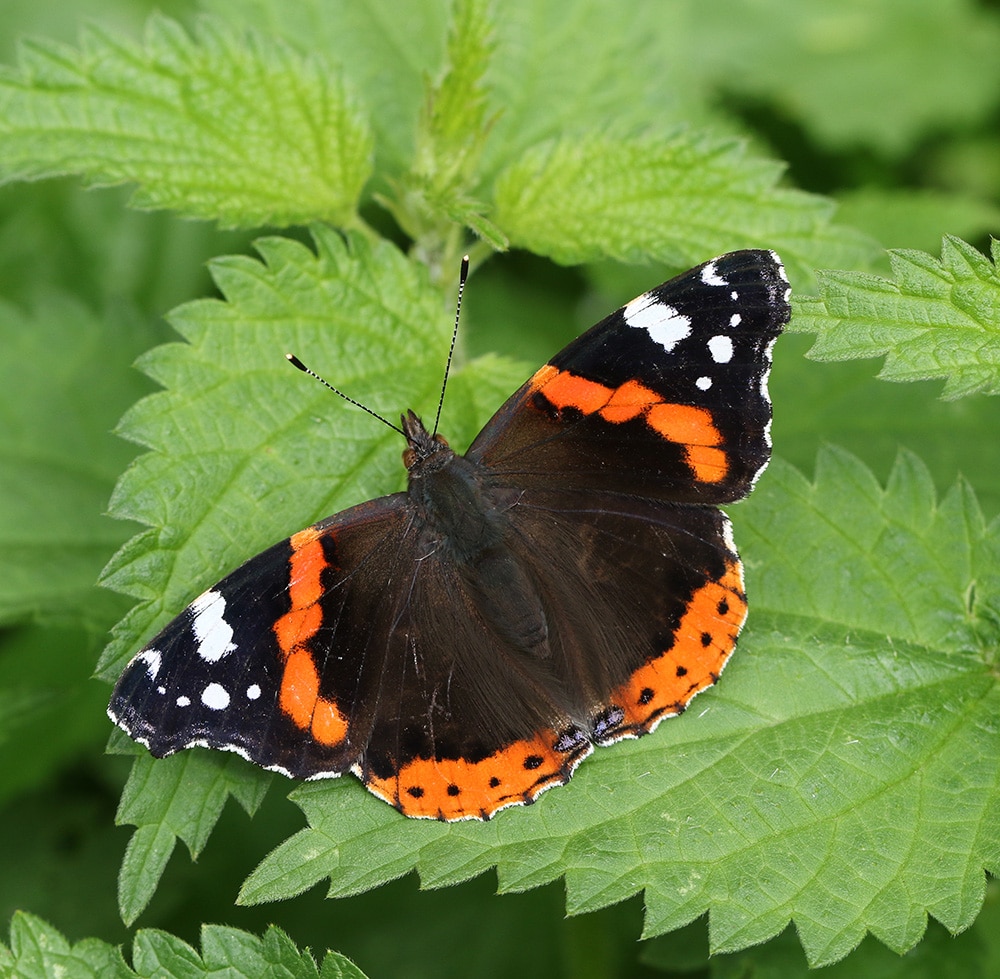Nettles are one of nature’s quiet treasures.
Often overlooked or even worse, cursed for their sting, they are one of the most nourishing and generous plants we have. A familiar sight, most of us know what a nettle looks like. They appear each spring with their tiny green fists, full of minerals, vitality, and medicine, asking nothing in return but for us to notice.
This is your invitation to reconnect with this wild and wonderful plant – gather it mindfully, prepare it gently, and allow it to nourish you from the inside out.
Please always forage responsibly, with care and gratitude. Wear gloves. Never take more than you need.
Why Nettles?
Nettles are rich in:
- Iron, calcium, magnesium, and chlorophyll
- Vitamins A, C, D, and K
- Natural antihistamines and anti-inflammatory properties
They support the blood, bones, skin, and immune system. They ground us. Energise us. Remind us we are part of the earth, not separate from it.
And – just as importantly – they’re not only for us. Nettles are the only plant that certain butterflies -including the Peacock, Small Tortoiseshell, Red Admiral and Comma lay their eggs on – see more about these butterflies below*.
The stinging leaves protect the caterpillars from predators while they grow.
So when you gather nettles, gather gently, with intention and leave plenty behind for the butterflies. Because we’re not just foraging for nourishment – we’re sharing the landscape with wild lives we cannot always see.
Cherish Nature Nettle Recipes
Nettle Infusion (Deep Herbal Nourishment)
This is not a delicate tea; it’s a nourishing mineral-rich infusion to sip during the day or pour into your bath.
You’ll need:
- A large handful of dried nettles (or fresh, roughly chopped)
- 1 litre of boiling water
- A large jar or teapot with lid
To make:
Place nettles in your jar. Pour over boiling water. Cover and steep overnight.
Strain in the morning. Drink throughout the day, warm or cool. Keep in the fridge for up to 24 hours.
Ritual tip: Whisper a quiet thank you to the plant as you sip.
Wild Nettle Soup
Simple, nourishing, green and full of spring.
Ingredients:
- 1 onion, finely chopped
- 1 potato, peeled and diced
- 1 clove garlic
- A colander of fresh nettle tops (use gloves to harvest and handle)
- Olive oil, salt, black pepper
- Optional: a splash of cream or oat cream
To make:
Sauté onion and garlic in olive oil. Add potato, season, and cover with water or stock. Simmer until soft. Add nettles in the last 2 minutes – just enough to wilt and brighten. Blend until smooth. Swirl in cream if desired.
Serve warm, with bread and silence.
Nettle Pesto
Vibrant. Earthy. Gloriously green.
Ingredients:
- A large handful of fresh nettles (blanched and drained)
- 1 clove garlic
- 50g sunflower seeds or walnuts
- Juice of half a lemon
- Olive oil
- Salt to taste
To make:
Blanch nettles (drop into boiling water for 1 minute, then drain).
Blend all ingredients together until smooth. Add oil slowly until it reaches your desired texture.
Serve with pasta, drizzle over roasted veg, or stir into soup.
Closing Thought
The sting of the nettle is only part of the story.
Like many sacred things, it asks for care, attention, and respect before revealing its gifts.
So let this be a gentle reminder:
Even the things that once stung can become a source of healing, if we meet them with softness.
Cherish the gift of nature.
And let nettles remind you that nourishment grows wild, humble, and green at your feet.
*Butterflies That Rely on Nettles:
Peacock Butterfly
Recognisable by its stunning eye spots—like living jewels. These are classic garden visitors and love sunny nettle patches where the caterpillars can grow safe and fat.
Small Tortoiseshell
Once a familiar sight – bright orange with black and yellow patterning, and blue scallops on the edge of the wings. One of the most commonly seen butterflies in the UK… but their numbers have declined, making their dependence on nettles even more important.
Red Admiral
Bold, dramatic, and a late arrival – these striking black and red butterflies appear in late summer. The adults feed on fruit and flowers, while the caterpillars rely on nettles. A well-known visitor in British gardens.
Comma Butterfly
Richer orange-brown wings, jagged edges like they’ve been cut with pinking shears. And yes—there’s a tiny white comma-shaped mark on the underside of its wings. Once rare, but making a strong comeback in the UK thanks to healthy nettle patches.
Cautions:
- Harvest responsibly.
- Avoid Harvesting from areas exposed to pollution, such as busy roadsides.
- Ensure you are picking nettles and not a similar plant – use a reliable plant identification guide.
- Always ask the landowner for permission before foraging.
- Wear gloves and protective clothing to avoid stings.

